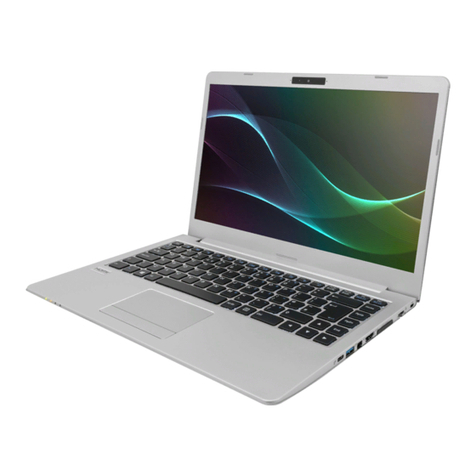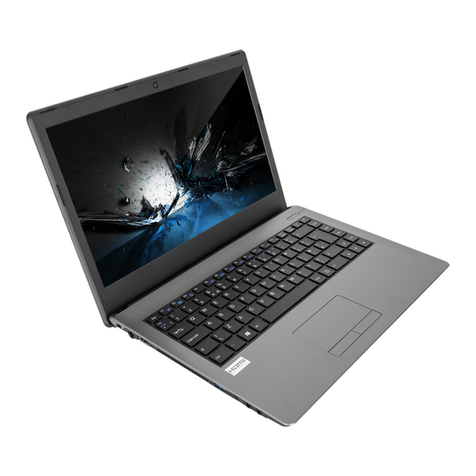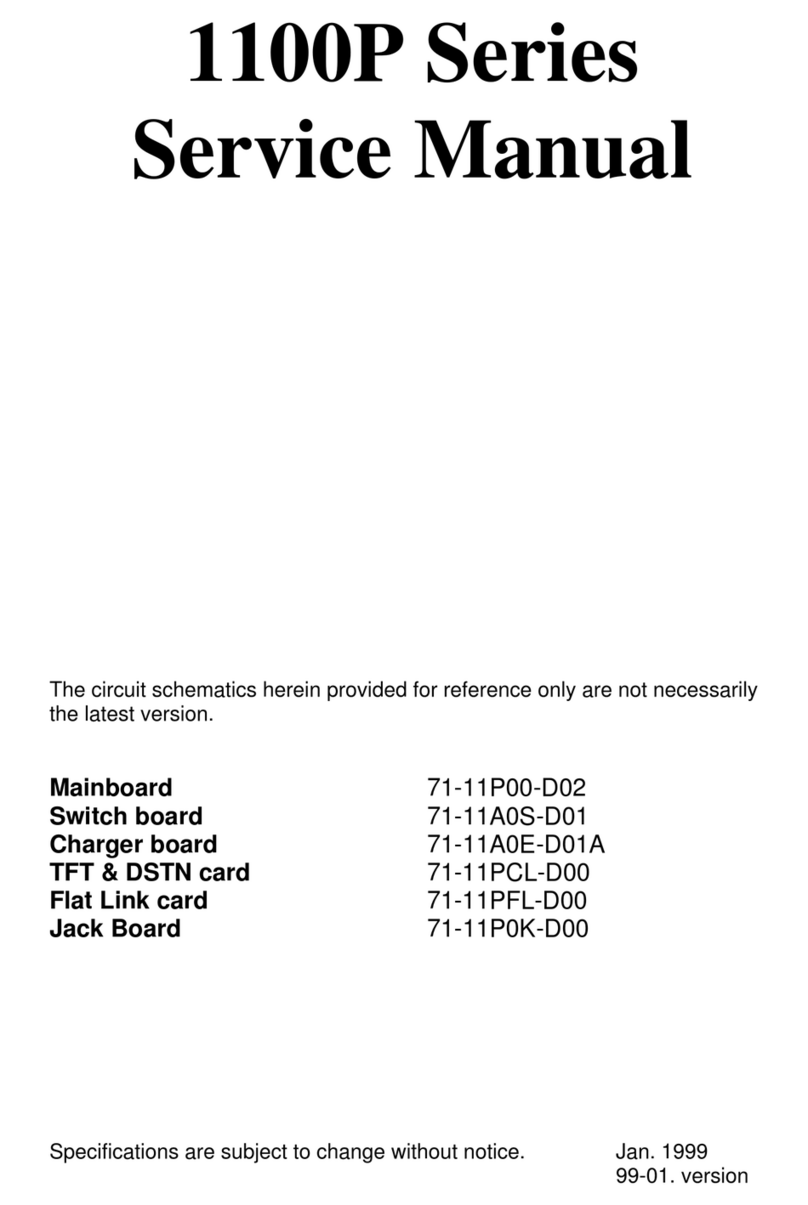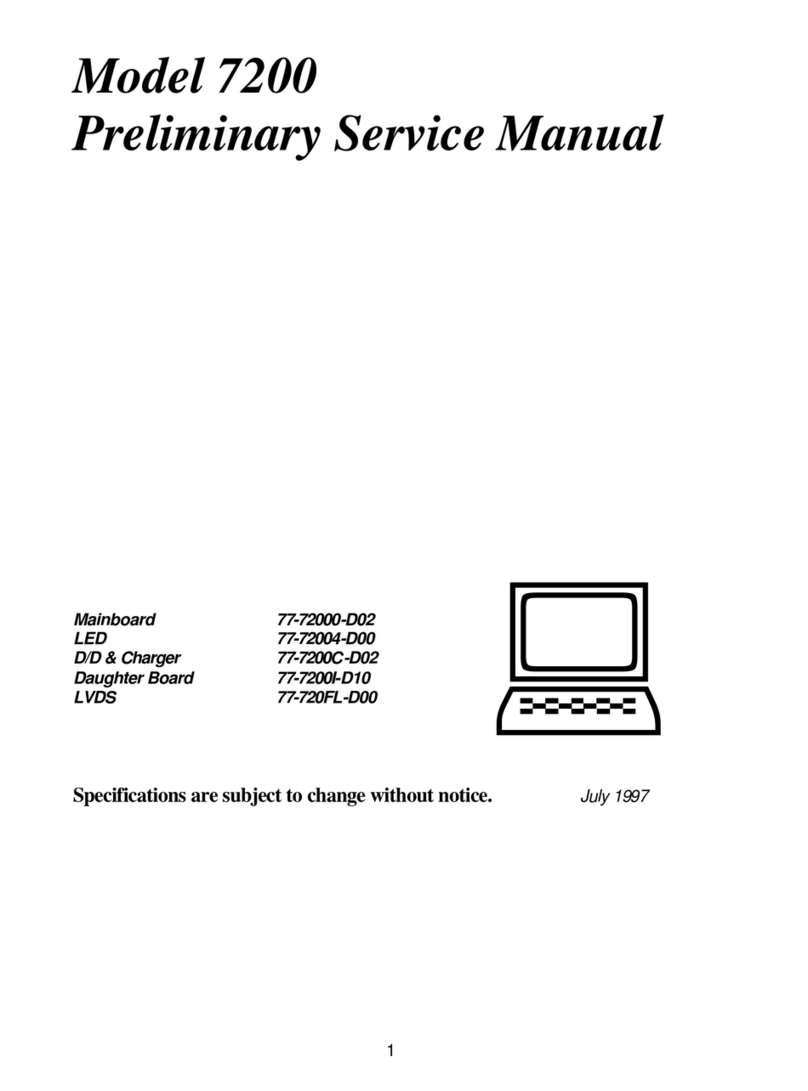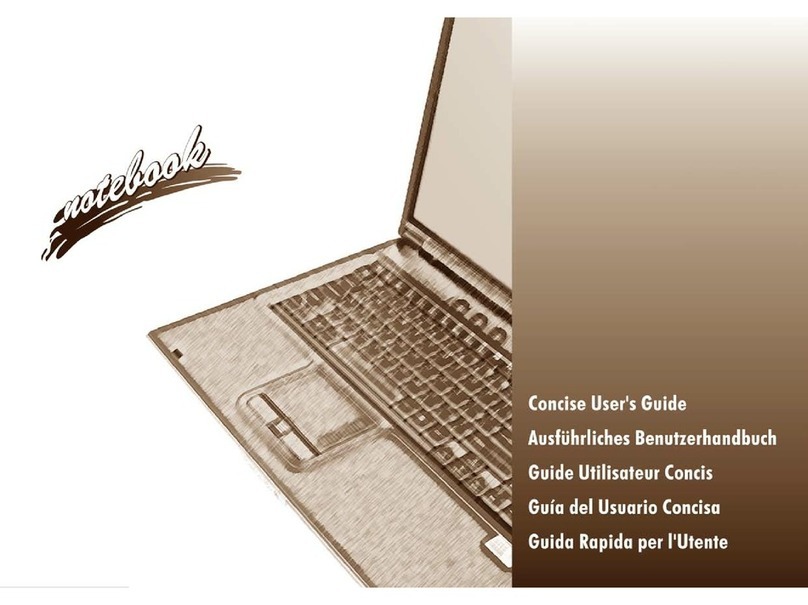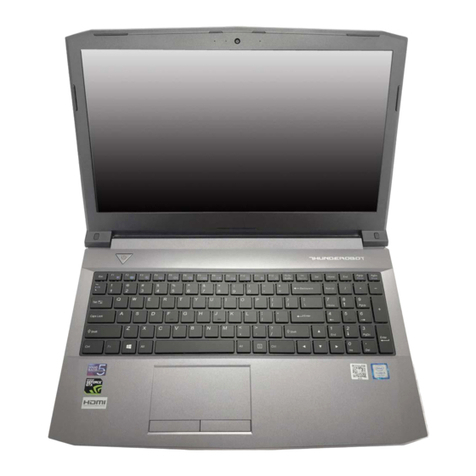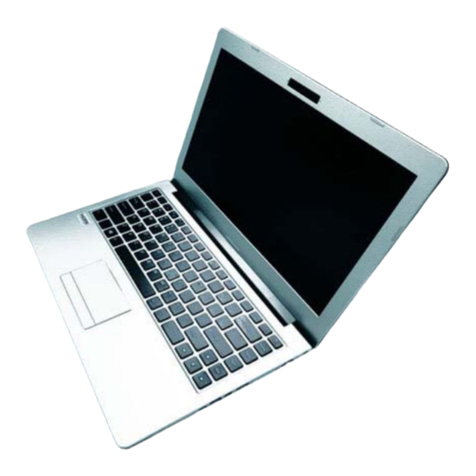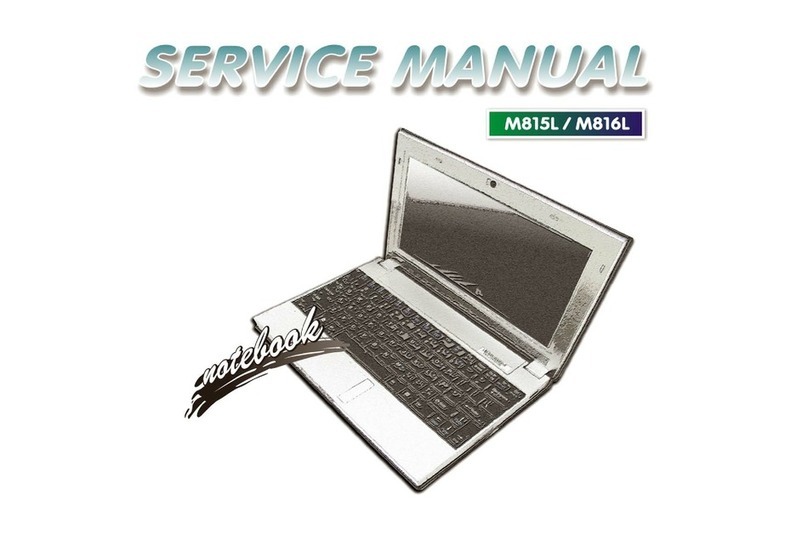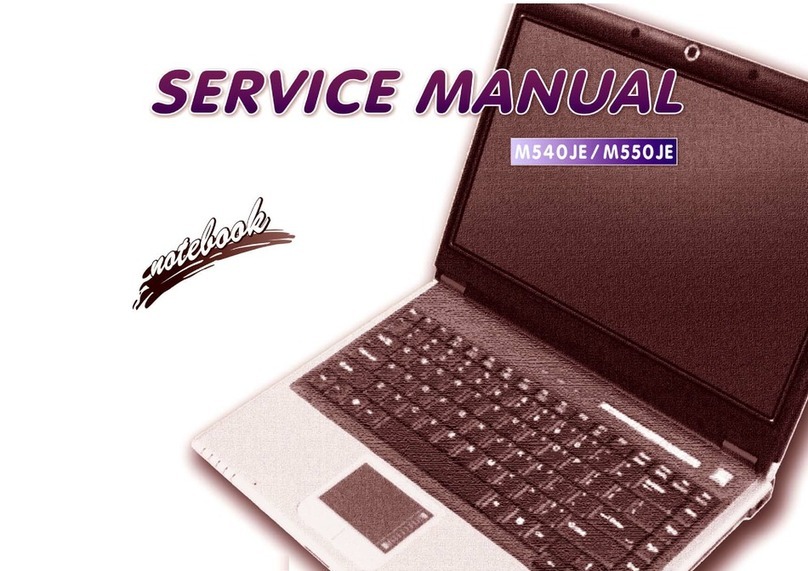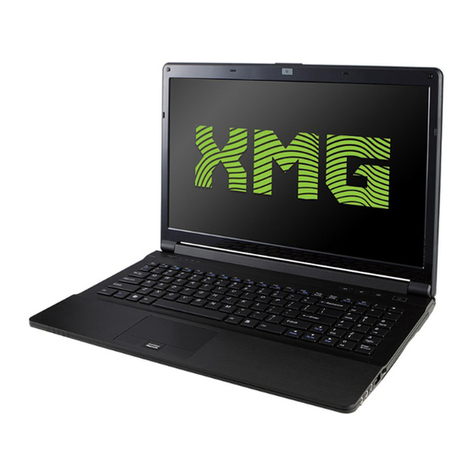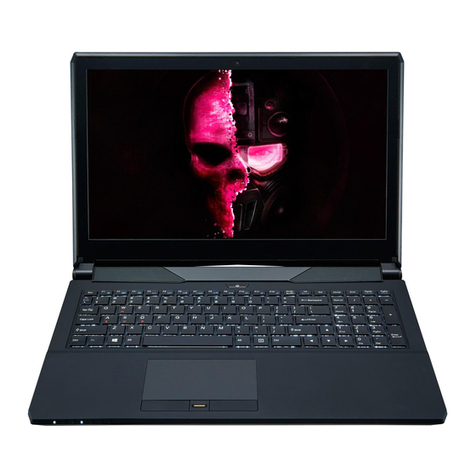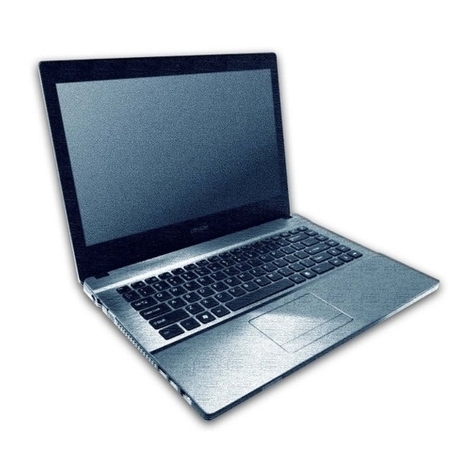
Contents
Systemspecifications........................................................................................... 1
Chipsets ................................................................................................................ 3
SiS630S .................................................................................................................3
PC Card Chipset.....................................................................................................8
CPUand Memory .................................................................................................. 9
CPU ........................................................................................................................9
Addingor replacing the processor. ........................................................................10
A: Remove the heat sink ................................................................................................10
B: Remove the processor ..............................................................................................11
C: Insert a new processor..............................................................................................12
D: Reinstall the heat sink................................................................................................13
E: Changing the SW1 DIP Switch settings ....................................................................13
Memory .................................................................................................................15
ExpansionMemory Socket ....................................................................................16
Installinga Memory Module ............................................................................................17
Changing the S3 DIP Switch settings ............................................................................18
RemovingaMemory Module ..........................................................................................19
Driveinformationand Pinassignments ............................................................. 20
Storage Devices....................................................................................................20
HDD(BUILT-IN).................................................................................................................20
HDDPINASSIGNMENT.................................................................................................20
Removing the HDD from the notebook ..........................................................................21
Removing the HDD from its tray ....................................................................................21
Inserting the HDD...........................................................................................................21
FDD ..................................................................................................................................22
FDDPIN ASSIGNMENT .................................................................................................22
Removing the Floppy Disk Drive ....................................................................................22
Inserting the Floppy Disk Drive.......................................................................................23
DVD-ROM.........................................................................................................................24
DVD-ROMPINASSIGNMENT .......................................................................................24
Removing the DVD-ROM Module...................................................................................25
Inserting the DVD-ROM module.....................................................................................25
CD-ROM (OPTIONAL)......................................................................................................26
CD-ROMPIN ASSIGNMENT..........................................................................................26
InterfacePinAssignments .....................................................................................27
RS-232 Serial Interface ..................................................................................................27
ParallelInterface.............................................................................................................27
USBInterface .................................................................................................................27
Internaltrackpad Interface ..............................................................................................28
ExternalMonitor Interface...............................................................................................28
ExternalKeyboard/PS2Mouse Interface........................................................................28
PCMCIACardBusInterface............................................................................................29
Internal PCIInterface ......................................................................................................30
LCD Interface .................................................................................................................31
Power.................................................................................................................. 32
Application: ...........................................................................................................32
Charge board ........................................................................................................35
Inverterboard ........................................................................................................38
Adaptor .................................................................................................................39
